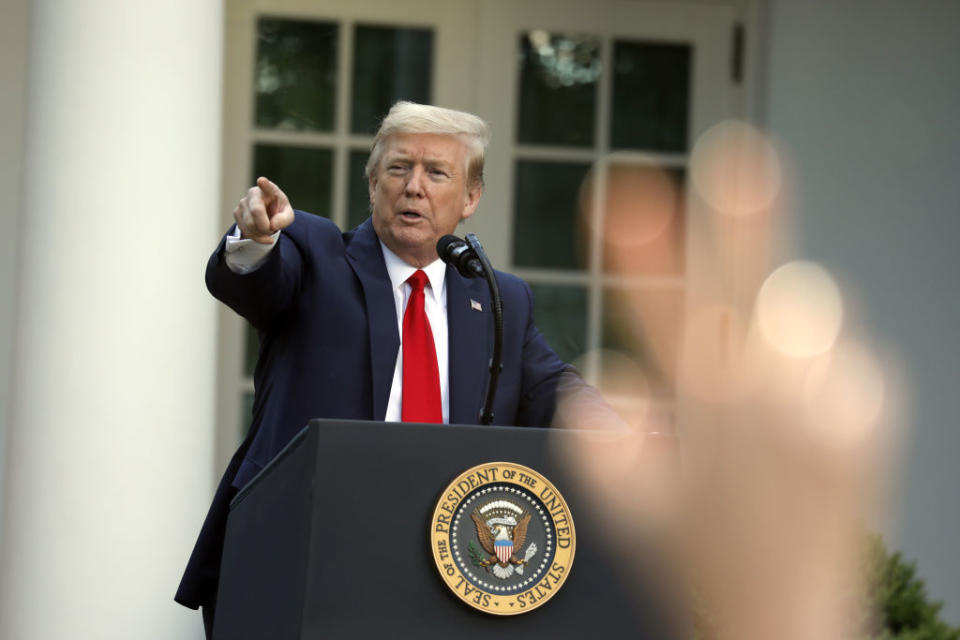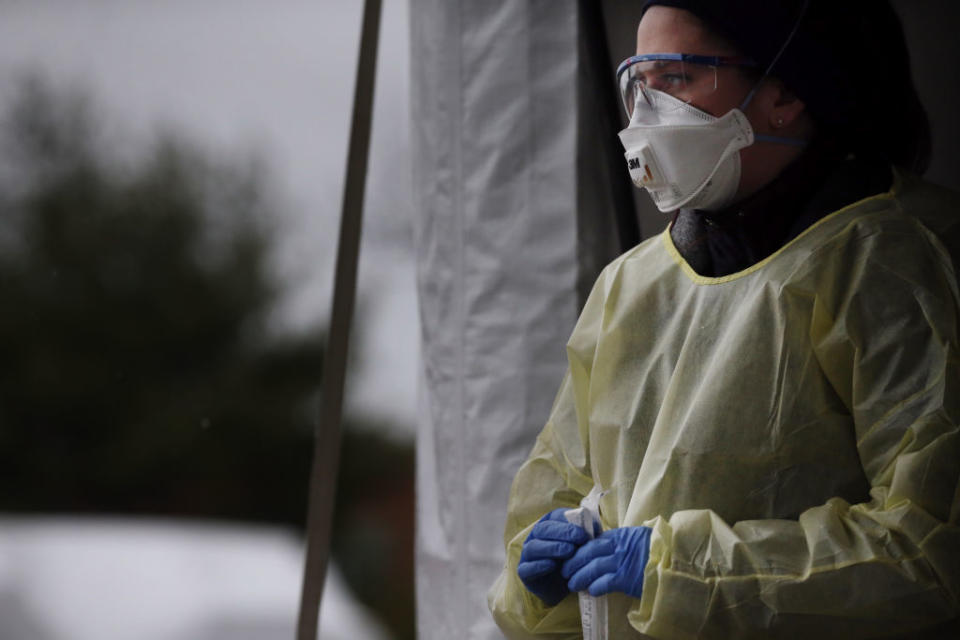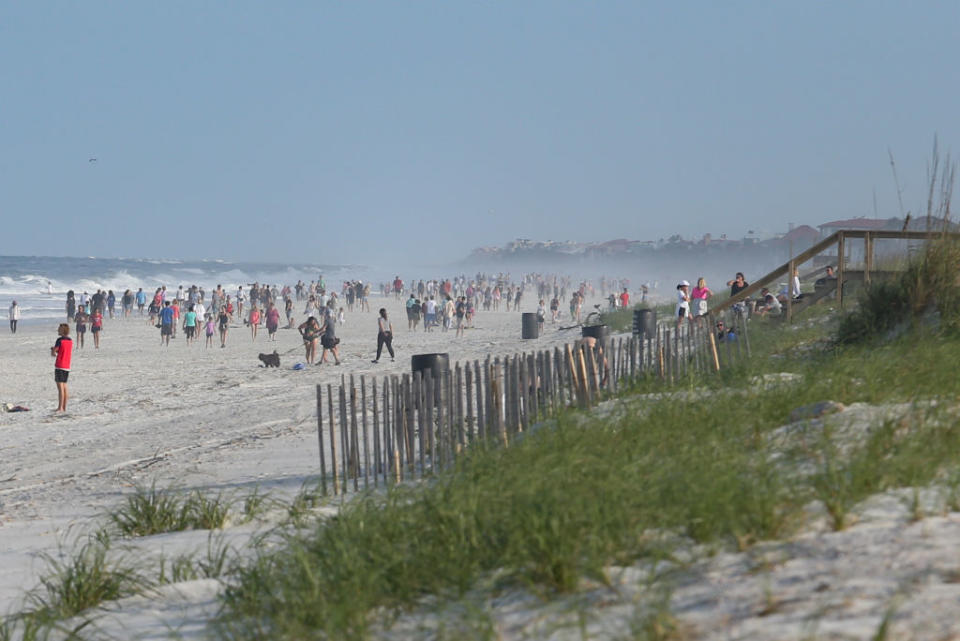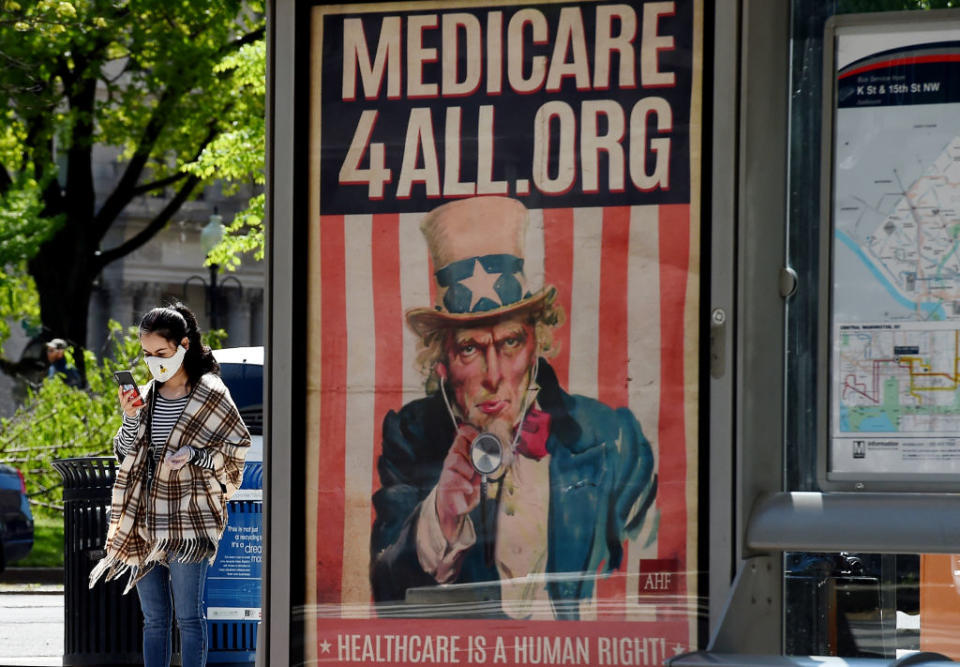Five reasons coronavirus has hit the US so hard
In January, US President Donald Trump claimed the country had coronavirus “totally under control”.
Now, they have the highest COVID-19 case count and death toll in the world, with over 56,000 fatalities and 988,000 confirmed cases.
But why has America been hit so hard by the coronavirus pandemic?
1. US government’s slow response to first coronavirus cases
The US government received its first formal notification of the coronavirus outbreak in China on January 3, but by the time the first case in the US was confirmed on January 20, it still hadn’t put any preventative measures in place.
It wasn’t until January 31 that President Trump banned non-citizens who’d recently been in China from entering the country – and by that time 430,000 people had arrived from China on direct flights since the end of December.

It took another month for them to ban travellers from Europe.
By the end of February, there were 60 cases throughout the country, but still no measures in place.
A month later, the country had over 10,000 cases.
“Delay of any kind increases epidemic growth, because spread continues unchecked,” says Professor of Global Biosecurity at UNSW Medicine, Raina MacIntyre.
“It’s essential to act quickly in these circumstances.”
2. COVID-19 testing delays throughout the US
“The delays in testing have been a huge factor in the US pandemic,” Professor MacIntyre said.
“There were a series of problems from gate-keeping of testing, to faulty tests, to FDA delays in approval. This all meant there was an inability to detect cases, or even realise the extent of the pandemic. As a result, the disease just kept spreading.”
Five reasons why New York City has been hit so hard by coronavirus
'A whole city underground': Video shows New York's heartbreaking virus problem
Trump says he will suspend all immigration to the US amid coronavirus crisis
The small number of initial tests done in February were faulty. It was promised that five million tests would be done by mid-March, but it’s believed only a million were done by this time.

Then, because labs were overwhelmed by an influx of tests, people weren’t getting results back for more than a week – often meaning they’d already spread the virus.
Without information from tests, it’s impossible to know where the next hotspot might occur, and impossible to identify and isolate infected people.
In comparison, South Korea’s coronavirus fatality rate is just 0.7 per cent – something health officials have put down to the country’s extensive and early testing.
3. Limited social distancing throughout the US
Some well-intentioned actions, such as cutting services on the New York subway, may have simply led to more crowded buses and trains, further increasing the spread of the virus.

People have also ignored social distancing requirements; packed Florida beaches and anti-lockdown rallies supported by some state representatives – and President Trump – have certainly contributed to the spread of the coronavirus.
One rally in Olympia, Washington, was attended by 2500 people in mid-April, to the horror of local epidemiologist Dr Eric Feigl-Ding.
Trump threatens China as US coronavirus toll exceeds predictions
Coronavirus: Donald Trump makes stunning WHO decision amid pandemic
“I predict a new epidemic surge (incubation time ~5-7 days before onset symptoms, if any, and transmission to associates around that time, even among asymptomatics),” tweeted the public health scientist at the Harvard TH Chan School of Public Health.
2500 anti-lockdown rally in Olympia Washington. I predict a new epidemic surge (incubation time ~5-7 days before onset symptoms, if any, and transmission to associates around that time, even among asymptomatics)... so increase in 2-4 weeks from now. Remind me to check. #COVID19 pic.twitter.com/OLiGnQRkeL
— Eric Feigl-Ding (@DrEricDing) April 20, 2020
“The infection is spread by close contact, and can be spread from people with no symptoms or minimal symptoms, so close contact and crowds would amplify transmission,” Professor MacIntyre confirmed.
4. Lack of medical supplies or ventilators in the US
A shortage of ventilators and personal protection equipment means hospitals throughout the country are struggling to help patients and protect health workers.
“In cities like New York where there is high disease incidence, the lack of masks and respirators to protect health workers, as well as the shortage of ICU beds and ventilators would have certainly have contributed to the severity of the pandemic,” Professor MacIntyre said.
The lack of supplies has reportedly meant healthcare workers are having to fashion their own makeshift PPE gear, or reuse existing equipment.

The shortage of ventilators – reportedly due to the government’s lackadaisical approach to acquiring enough equipment – means doctors are concerned they may have to choose which patients are helped by the life-saving machines.
5. The US health system is broken
About 27 million people in America have no medical insurance, and that doesn’t include the ‘undocumented’ immigrants without US citizenship, who are too scared to visit a doctor for the fear of being deported.
This means many people aren’t being diagnosed or treated for the coronavirus.

To make matters worse, because American employers aren’t required to offer paid sick leave, it also means many people who could have coronavirus – particularly healthcare workers - are still going to work, and spreading the disease.
Do you have a story tip? Email: newsroomau@yahoonews.com.
You can also follow us on Facebook, Instagram and Twitter and download the Yahoo News app from the App Store or Google Play.





